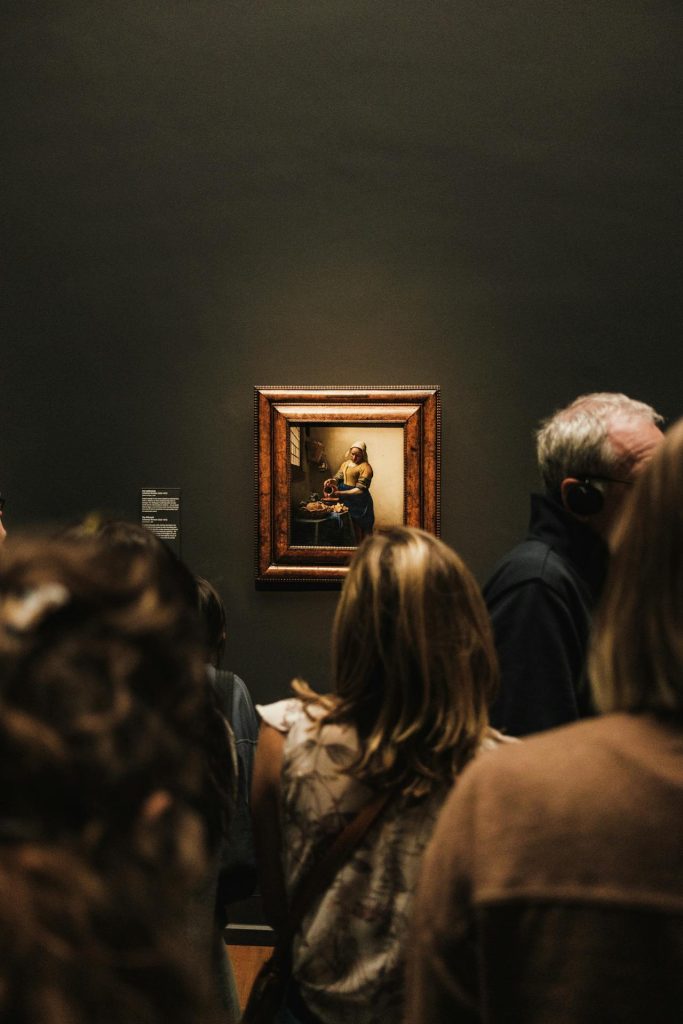Table of Contents
What Artists Can You See in the Rijksmuseum?
The Rijksmuseum, located in Amsterdam, is one of the most renowned art museums in the world, celebrated for its extensive collection of masterpieces that span centuries of Dutch and European art. The museum serves as a testament to the richness of artistic heritage, featuring works by some of the most significant artists in history. Visiting the Rijksmuseum offers an unparalleled journey through the evolution of art, with a particular emphasis on the Dutch Golden Age. Below, we explore the prominent artists whose works are displayed in this magnificent institution.

Photo by Pexels
The Dutch Masters
The Rijksmuseum is perhaps most famous for its collection of works by the Dutch Masters, painters who flourished during the Dutch Golden Age in the 17th century. These artists are known for their exceptional attention to detail, innovative techniques, and their ability to capture the essence of their time.
- Rembrandt van Rijn
At the heart of the Rijksmuseum’s collection is Rembrandt, arguably the most celebrated Dutch painter. His works display a mastery of light, shadow, and human emotion. The centerpiece of the collection is The Night Watch (1642), a monumental group portrait that demonstrates his innovative use of composition and chiaroscuro. Other notable works by Rembrandt in the museum include his self-portraits and The Jewish Bride, each offering insight into his technical brilliance and introspective depth. - Johannes Vermeer
Known for his exquisite use of light and his intimate domestic scenes, Vermeer is another cornerstone of the Rijksmuseum’s collection. Among his works displayed is The Milkmaid (c. 1658), a serene depiction of a maidservant absorbed in her task. This painting epitomizes Vermeer’s ability to elevate everyday moments to the realm of the sublime. - Frans Hals
Frans Hals, celebrated for his lively and dynamic portraiture, is also represented in the Rijksmuseum. His works, such as The Merry Drinker (c. 1628), showcase his skill in capturing spontaneity and character. - Jan Steen
Steen’s works are notable for their humorous and often moralistic depictions of Dutch daily life. Paintings like The Feast of Saint Nicholas (1665-1668) bring to life the joys and follies of family celebrations with vivid detail and storytelling.
Other Iconic Artists
In addition to the Dutch Masters, the Rijksmuseum features a diverse array of works by European artists and sculptors.
- Pieter Bruegel the Elder
Though primarily associated with Flemish art, Bruegel’s influence on Northern Renaissance painting is undeniable. His works in the museum often depict peasant life with intricate detail and moral undertones. - Peter Paul Rubens
A prominent figure of the Baroque period, Rubens is represented in the museum with his dynamic and dramatic compositions, blending human emotion with grandeur. - Anthony van Dyck
Known for his elegant portraits of European nobility, van Dyck’s works in the Rijksmuseum reflect the sophistication of 17th-century art. - Jacob van Ruisdael
As one of the leading landscape painters of the Dutch Golden Age, van Ruisdael’s works, such as View of Haarlem with Bleaching Fields, capture the vastness and serenity of the Dutch countryside with remarkable precision.
Modern and Decorative Arts
The Rijksmuseum also holds a substantial collection of art from later periods, including pieces by Impressionist and Post-Impressionist artists who were influenced by the Dutch Masters. Additionally, the museum houses an extensive collection of decorative arts, including ceramics, furniture, and textiles, offering a broader context for the art of the Dutch Golden Age and beyond.
Asian Art and Global Influences
The museum’s Asian Pavilion showcases the influence of global art on Dutch culture, displaying works from China, Japan, India, and Southeast Asia. These collections highlight the interplay between Eastern and Western artistic traditions during the height of the Dutch trade empire.
Why the Rijksmuseum Stands Out
What makes the Rijksmuseum a standout among the world’s art institutions is not just the caliber of its artists but also the way it contextualizes their works. The museum’s layout guides visitors through a chronological journey of art history, providing a sense of the cultural and historical backdrop against which these artists created their masterpieces.
Moreover, the museum continually innovates in its presentation, using technology and creative curation to bring historical art to life. Temporary exhibitions further enhance the experience, often focusing on lesser-known aspects of the artists’ works or their impact on contemporary culture.
Conclusion
The Rijksmuseum is a treasure trove of artistic genius, housing works by some of the greatest artists in history, from Rembrandt and Vermeer to Rubens and Hals. It offers an unparalleled opportunity to immerse oneself in the rich tapestry of Dutch and European art. For anyone passionate about history, culture, or art, the Rijksmuseum is a must-visit destination that showcases the enduring power and beauty of artistic expression.


No responses yet